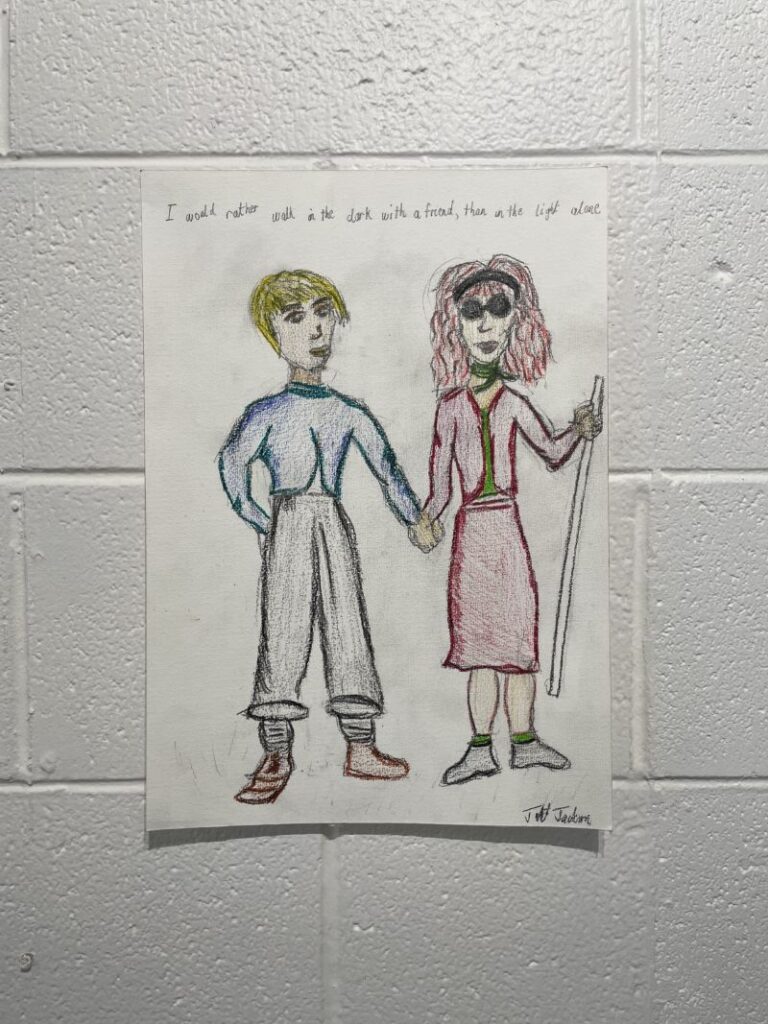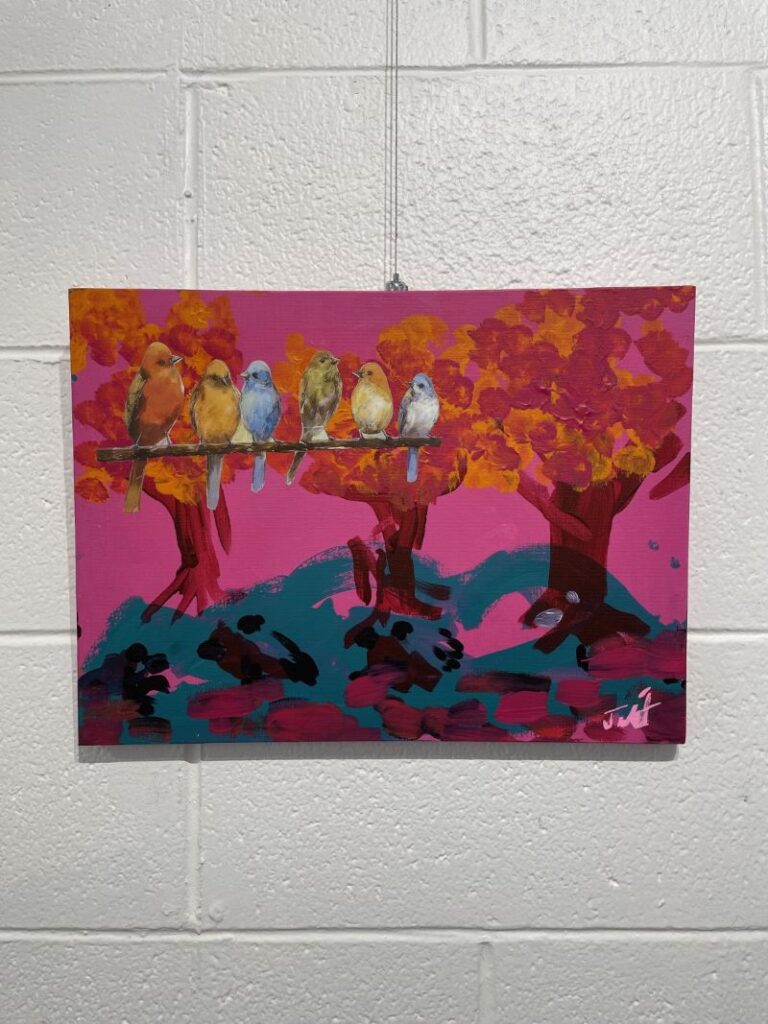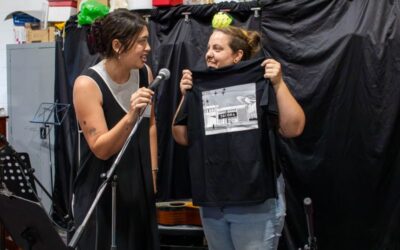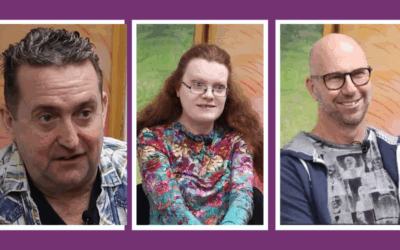Juliet Jackson’s art is full of colour, movement, and words. Losing her sight later in life hasn’t stopped her from creating; if anything, it’s led her to adapt and expand her artistic practice.
A lifelong passion for art
Juliet grew up in Auckland and studied painting at Elam before later moving into design. Her love of art began early.
“I’ve been passionate about art since I was 14,” she says. “I would spend every moment in the art room I could, during breaks, after school. I was always creating.”

Her work draws influence from artists such as Frida Kahlo, Alister Nesbit Smith, Van Gogh, Matisse, and other impressionists and post-impressionists. Those influences can be seen in her fluid, expressive and thoughtful pieces.
Creating through touch, memory and adaptation
Since losing her sight, Juliet has developed inventive ways to continue painting and drawing.
“To keep the form of nature, people, and creatures that I’m drawing or painting, I have a few ways of adapting,” she explains. “I am constantly remembering which colours and strokes have been put on a page. I also use a technique where I put down balls of blue tac; one piece could show the top of the head, the next the chin, and I’ll work my way through a piece putting down blu tac to keep my forms correct. Otherwise, you could have an elephant with a huge trunk and a small body!”
Her art station is organised by feel. “All my colours stay in the same places — blues from darkest to lightest, greens, yellows, and so on. None of them move.”
Juliet’s artistic process:
Many of Juliet’s works feature words and quotes, sometimes well-known, sometimes her own.
Her intention is for viewers to connect with her art in a personal way. “Once I’ve made the work, it’s up to the interpretation of the people looking at it. But I’d like people to experience it in a positive way. If someone sees one of my works and thinks, ‘I believe that — I want to embody that in my life,’ that would be wonderful.”

For Juliet, creating and sharing her art is a form of connection. “It’s a type of communication,” she says. “It’s a way of saying, ‘This is who I am, and these are the values that interest me.’ It’s a way of offering a part of myself to others.”
Finding joy in change
Juliet’s journey through vision loss has profoundly shaped her perspective. “Certainly there was a period where I was devastated,” she reflects. “I thought I could only be a shadow of my prior self. But I’ve found that’s not the case. All my creativity and interest in life have found new ways to show themselves. Becoming blind is part of who I am, and this journey gives me joy.”
She describes her experience as an opportunity, that has deepened her sense of what’s important.
What’s next?
True to her adventurous spirit, Juliet’s future plans extend beyond the studio. “I’ve been rehearsing for a musical with John Davies (which is coming up, check it out here.), doing improv acting classes, and writing lots of poetry,” she says with a laugh. “But my next ambition is to go down a hydro slide.”
Why? “It’s just gotta happen,” she grins. “And it’s gotta have twists!”




